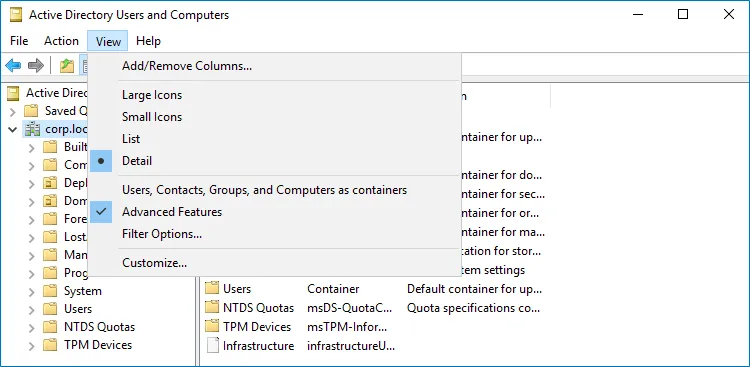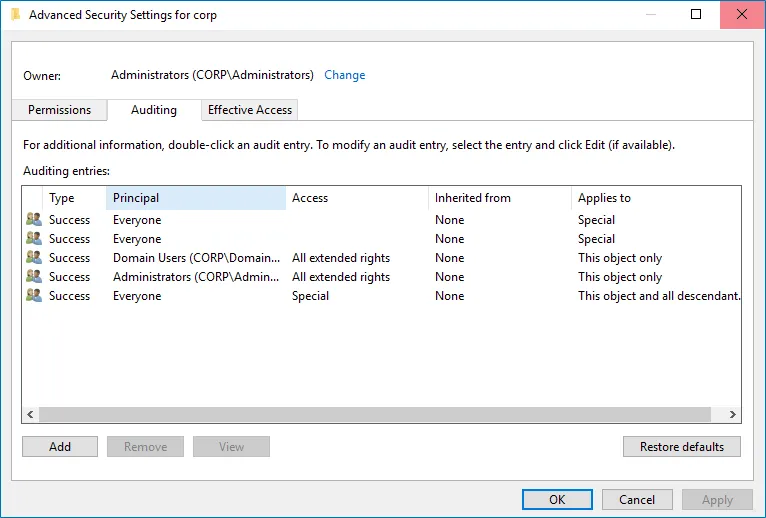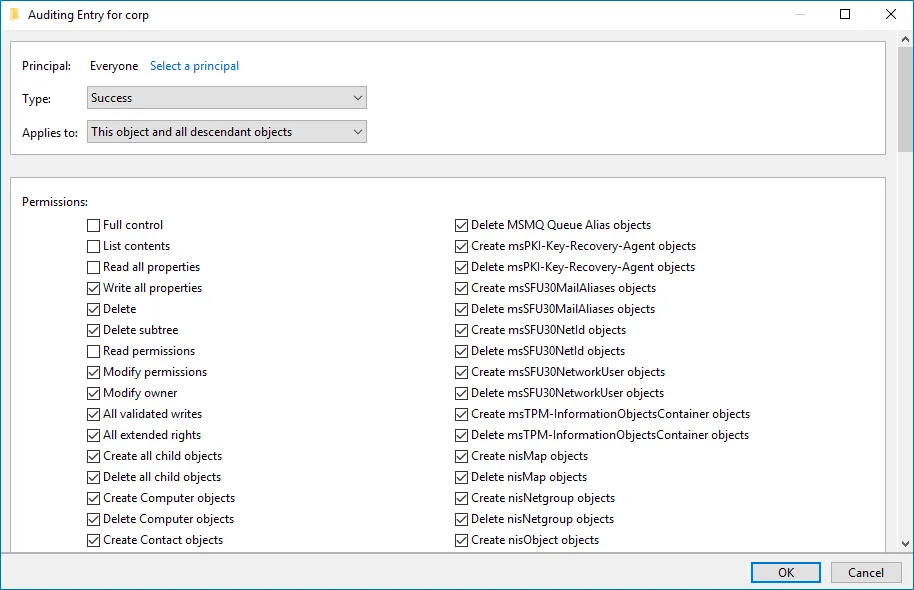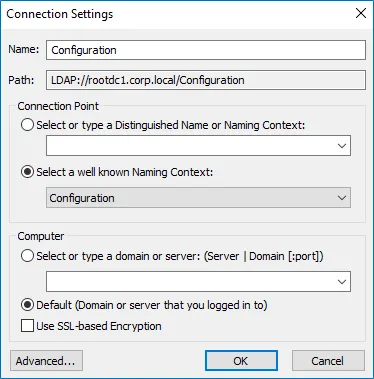Configure Object-Level Auditing
Object-level auditing must be configured for the Domain partition if you want to collect information on user activity in the domain. If you also want to audit changes to AD configuration and schema, you must enable object-level auditing for Configuration and Schema partitions.
Auditing of the Configuration partition is enabled by default. See the Active Directory topic for detailed instructions on how to enable monitoring of changes to the Schema partition in the target AD domain.
Perform the following procedures to configure object-level auditing for the Domain, Configuration and Schema partitions:
- Configuring object-level auditing for the Domain partition
- Enabling object-level auditing for the Configuration and Schema partitions
Configuring object-level auditing for the Domain partition
Step 1 – Open the Active Directory Users and Computers console on any domain controller in the target domain: navigate to Start > Windows Administrative Tools → Active Directory Users and Computers.
Step 2 – In the Active Directory Users and Computers dialog, click View in the main menu and ensure that the Advanced Features are enabled.

Step 3 – Right-click the <domain_name> node and select Properties. Select the
Security tab and click Advanced. In the Advanced Security Settings for <domain_name>
dialog, select the Auditing tab.

Step 4 – Perform the following actions on the Windows Server 2012 and above:
-
Click Add. In the Auditing Entry dialog, click the Select a principal link.
-
In the Select user, Computer, Service account, or Group dialog, type "Everyone" in the Enter the object name to select field.
-
Set Type to "Success" and Applies to to "This object and all descendant objects".
-
Under Permissions, select all checkboxes except the following: Full Control, List Contents, Read All Properties and Read Permissions.
-
Scroll to the bottom of the list and make sure that the Only apply these auditing settings to objects and/or containers within this container checkbox is cleared.

Enabling object-level auditing for the Configuration and Schema partitions
To perform this procedure, you will need the ADSI Edit utility. Follow the steps to enable object-level auditing for the Configuration and Schema partitions.
Step 1 – On any domain controller in the target domain, navigate to Start > Windows Administrative Tools > ADSI Edit.
Step 2 – Right-click the ADSI Edit node and select Connect To. In the Connection Settings dialog, enable Select a well-known Naming Context and select Configuration from the drop-down list.

Step 3 – Expand the Configuration <Your_Root_Domain_Name> node. Right-click the
CN=Configuration, DC=<name>,DC=<name>… node and select Properties.
Step 4 – In the CN=Configuration, DC=<name>, DC=<name> Properties dialog select the
Security tab and click Advanced. In the Advanced Security Settings for Configuration
dialog, open the Auditing tab.
Step 5 – Perform the following actions on the Windows Server 2012 and above:
-
Click Add. In the Auditing Entry dialog, click the Select a principal link.
-
In the Select user, Computer, Service account, or Group dialog, type "Everyone" in the Enter the object name to select field.
-
Set Type to "Success" and Applies to to "This object and all descendant objects".
-
Under Permissions, select all checkboxes except the following: Full Control, List Contents, Read All Properties and Read Permissions.
-
Scroll to the bottom of the list and make sure that the Only apply these auditing settings to objects and/or containers within this container checkbox is cleared.

Repeat these steps for the Schema container if necessary.